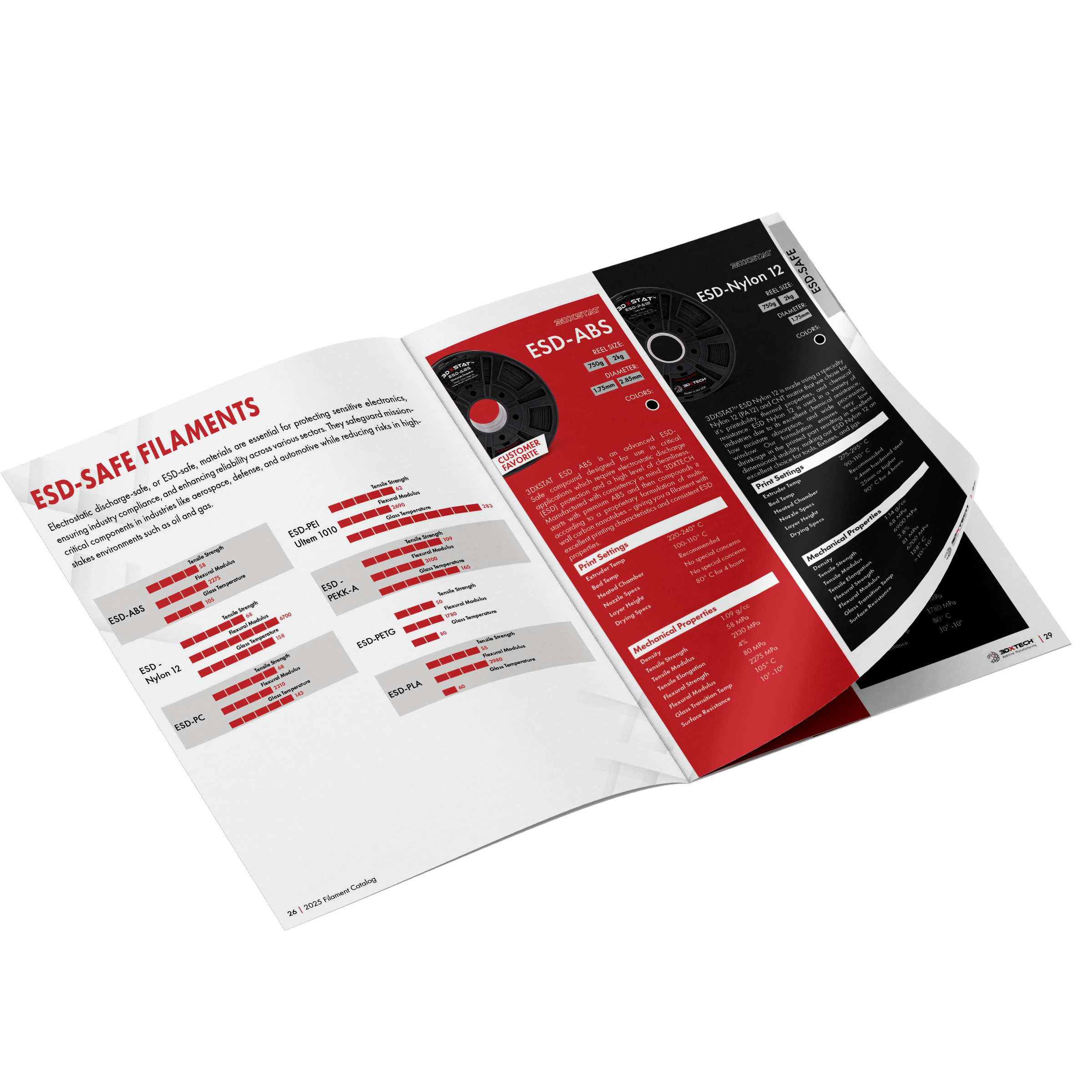Triton Nylon 12+CF
Triton 3D CF Nylon 12 was formulated to be 100% compatible with your Stratasys Fortus® printers and comes with a replacement EEPROM chip at a fraction of the cost of OEM Stratasys® branded filament. Our Nylon 12 + chopped carbon fiber is 100% guaranteed to work in your Stratasys® PA12CF compatible printers. Nylon 12 [PA12] absorbs less moisture than many other Nylons and retains its mechanical properties long after exposure to humid environments. Parts printed with PA12 also benefit from improved chemical resistance vs. many other nylons – including fuel, oil, lubricants, and many common solvents seen in industrial settings. Our Stratasys Compatible Nylon 12CF is also ESD-safe with a surface resistance value of 10^7 ohm/sq on printed specimen.
We provide the EEPROM chip for your printer (Classic and Plus Style Chip). All you need to do is load your canister, install the chip, and start printing! [Canister Loading Instructions]
MADE IN THE USA
We manufacture all of our filaments in our 68,000 ft² manufacturing facility (located in Grand Rapids, Michigan) using state-of-the-art equipment and processes. Our goal continues to be to make the most innovative filaments on the market – targeting difficult end-use applications.

Product Performance Comparison

New Digital Catalog


